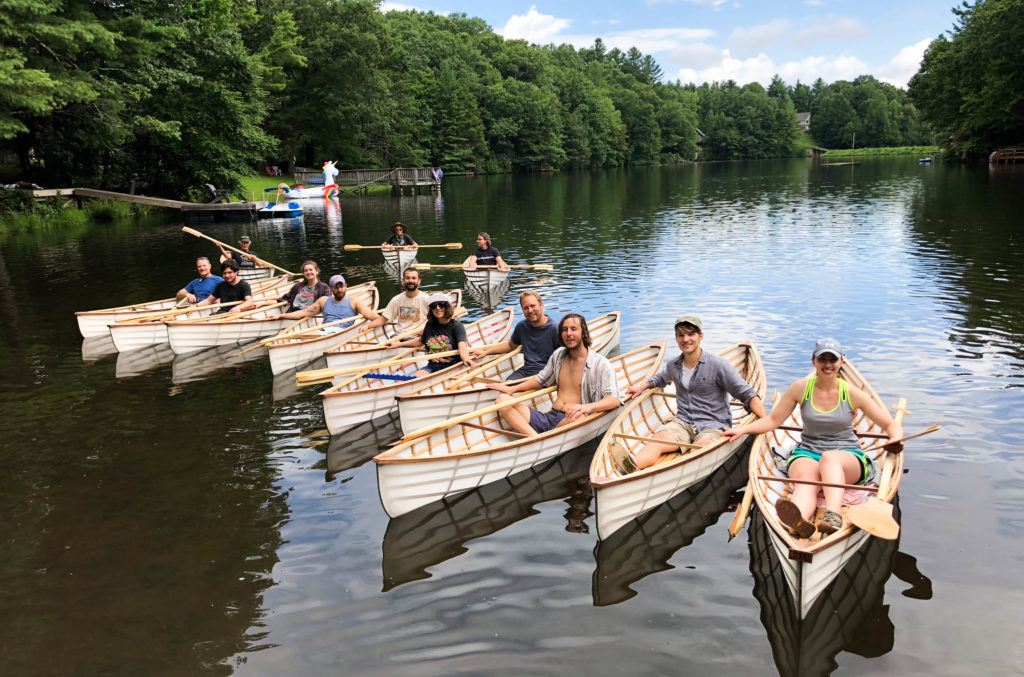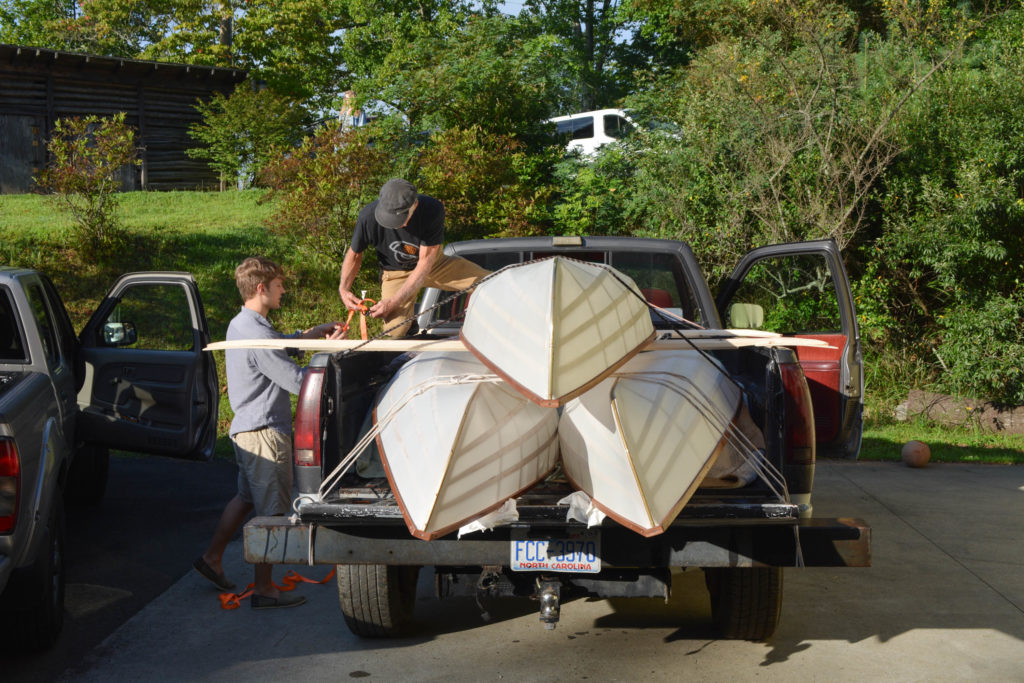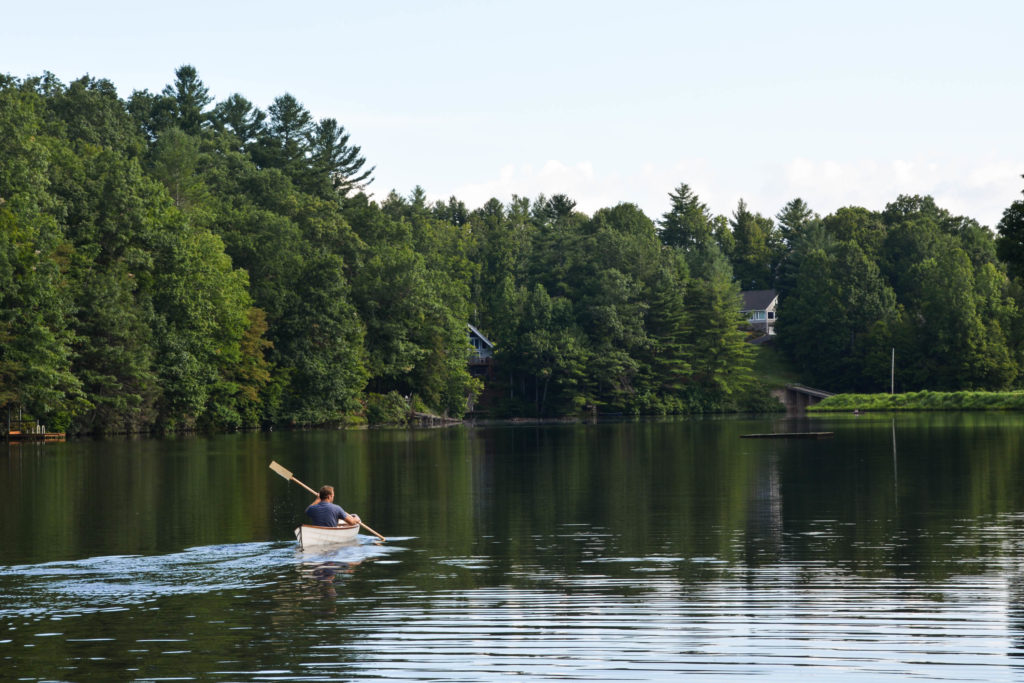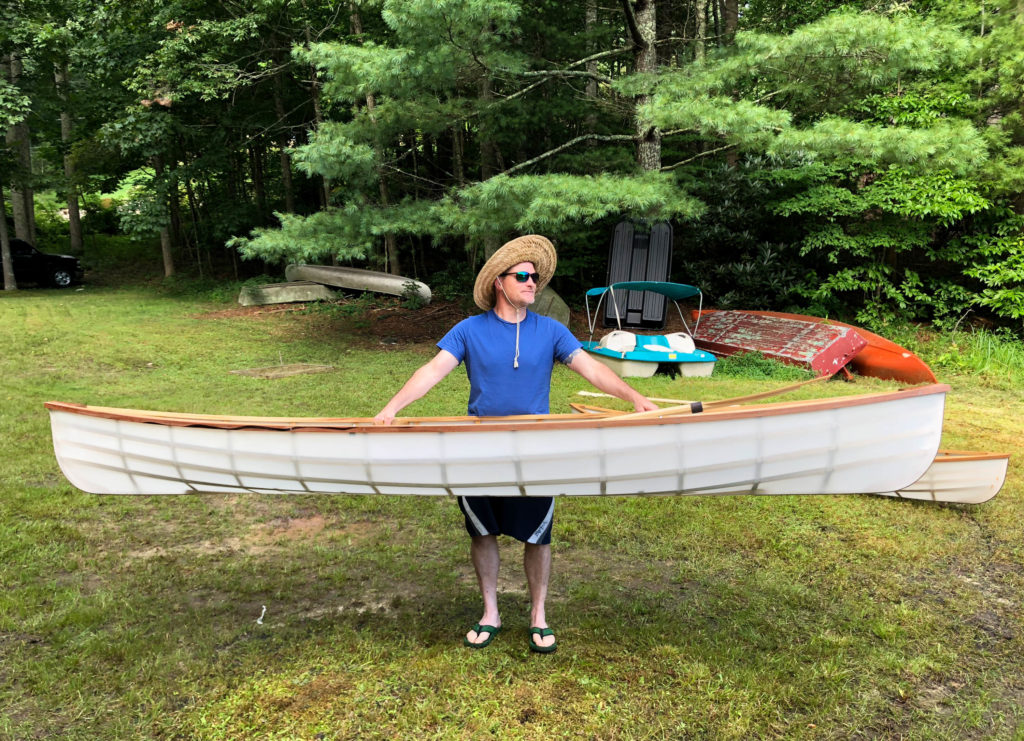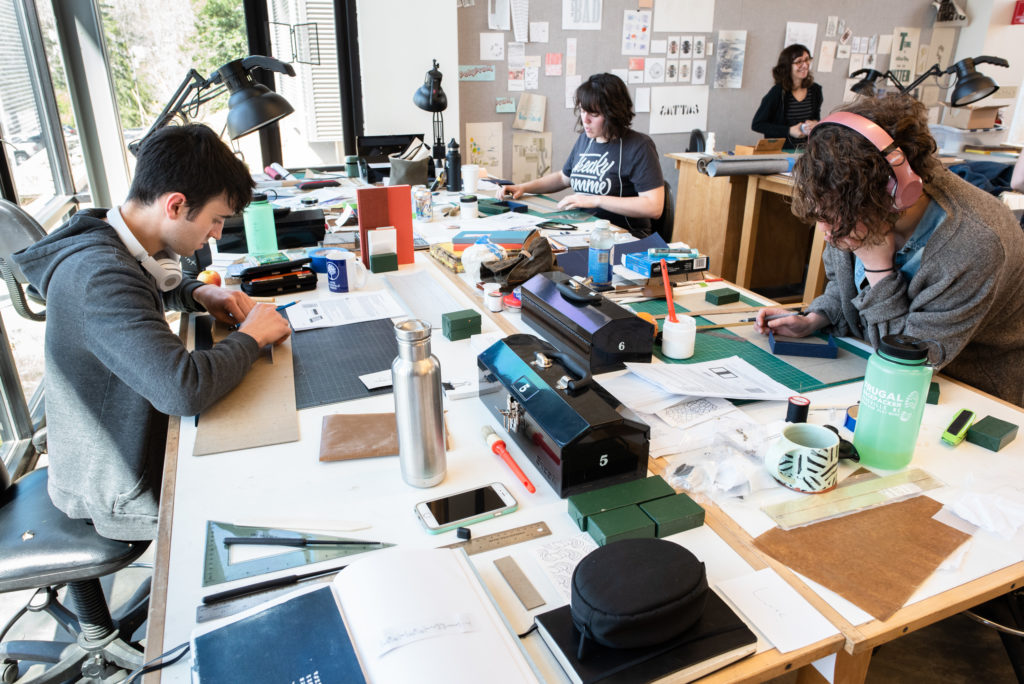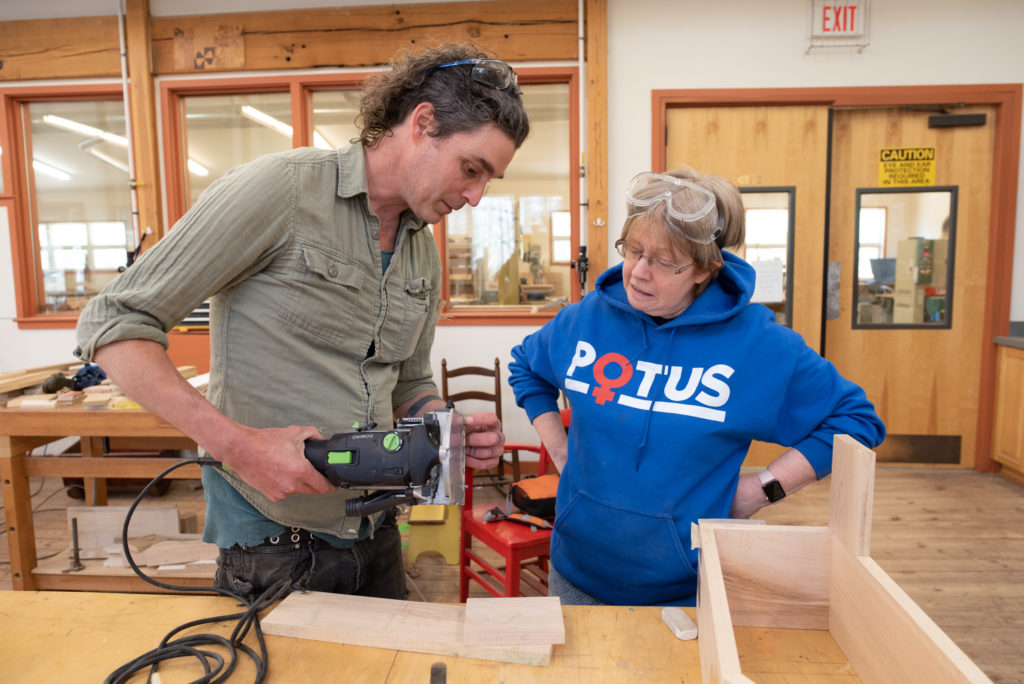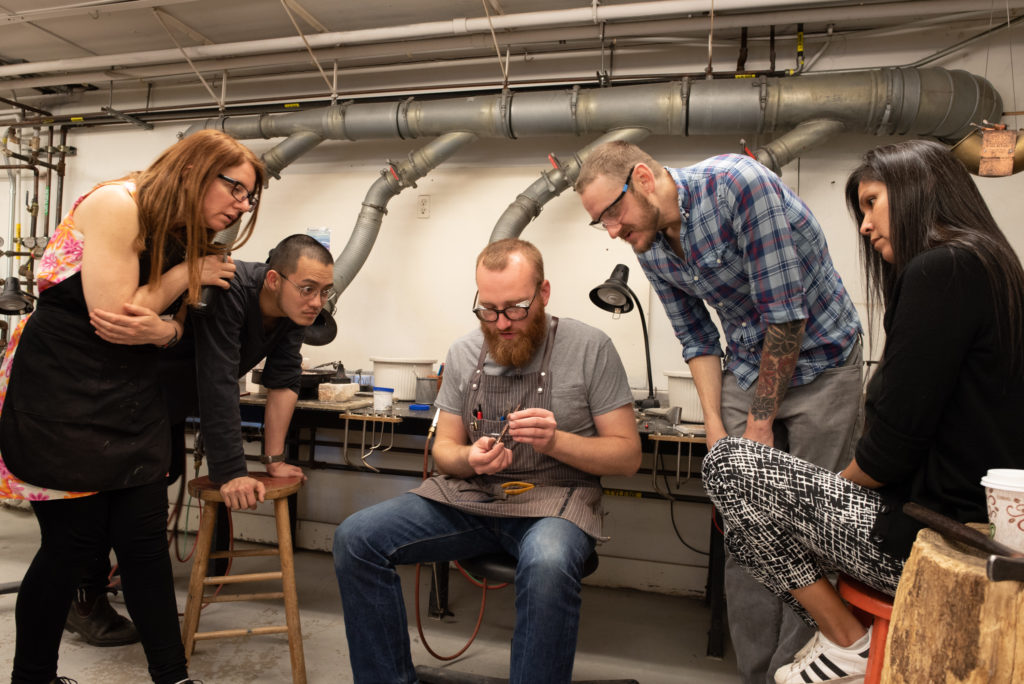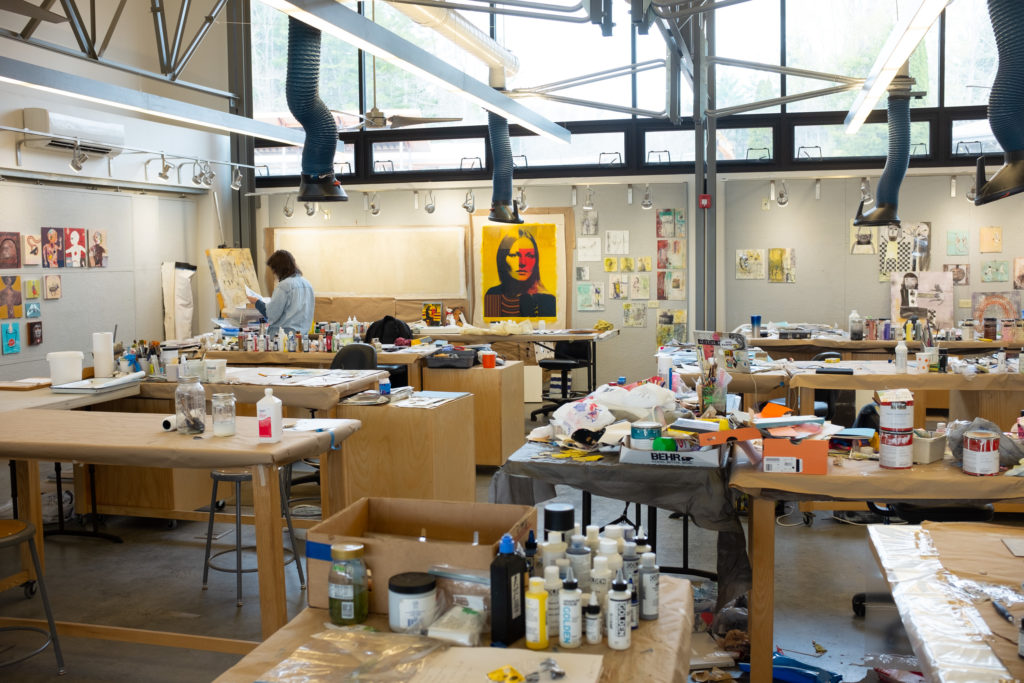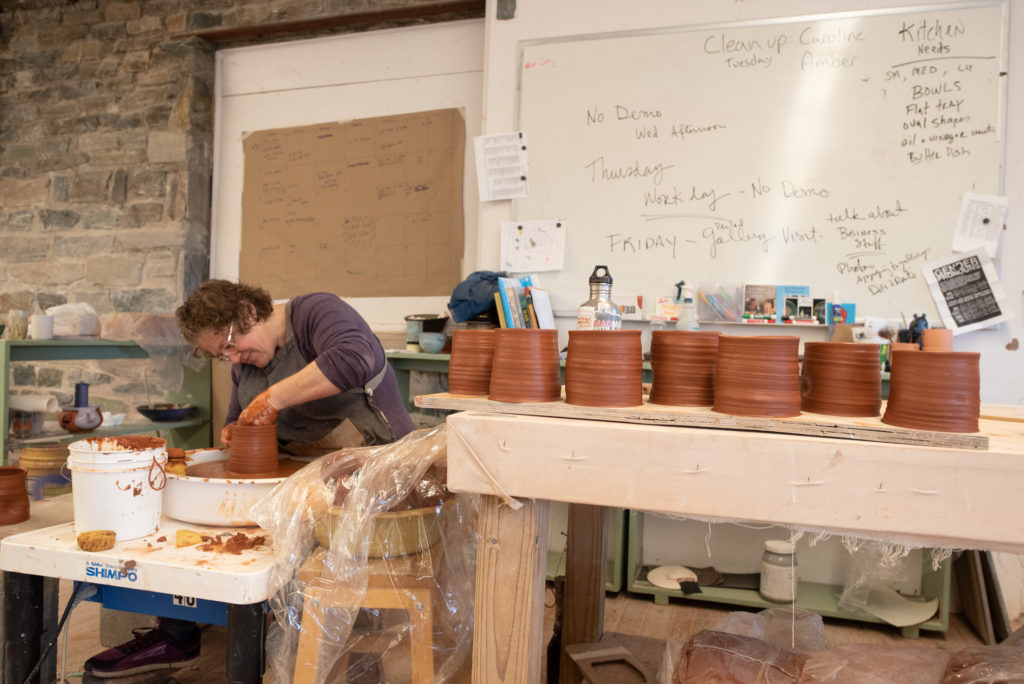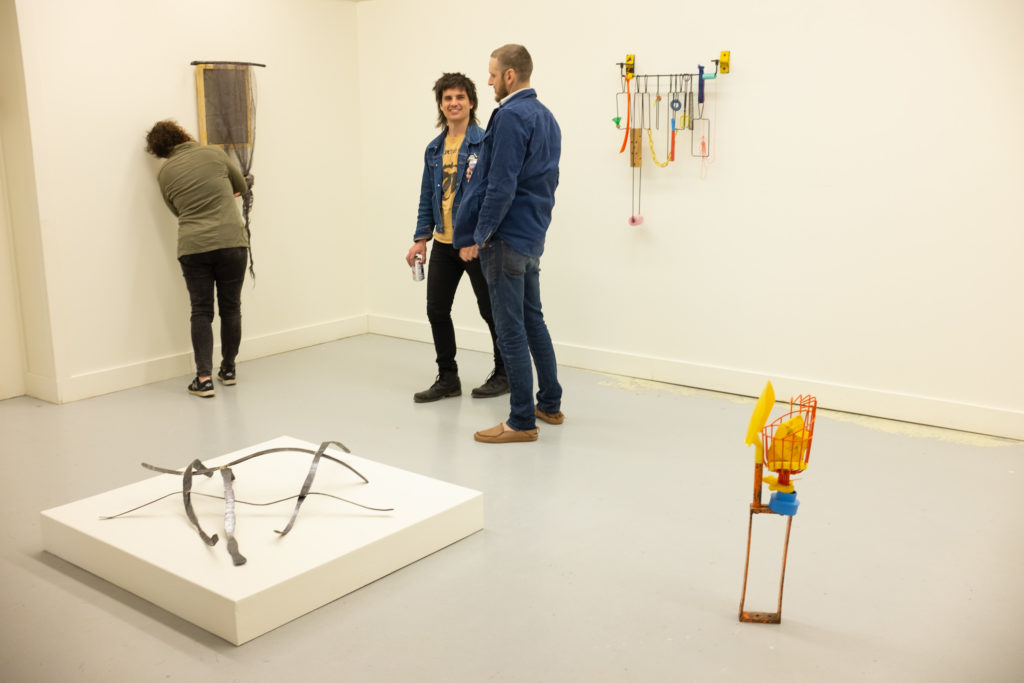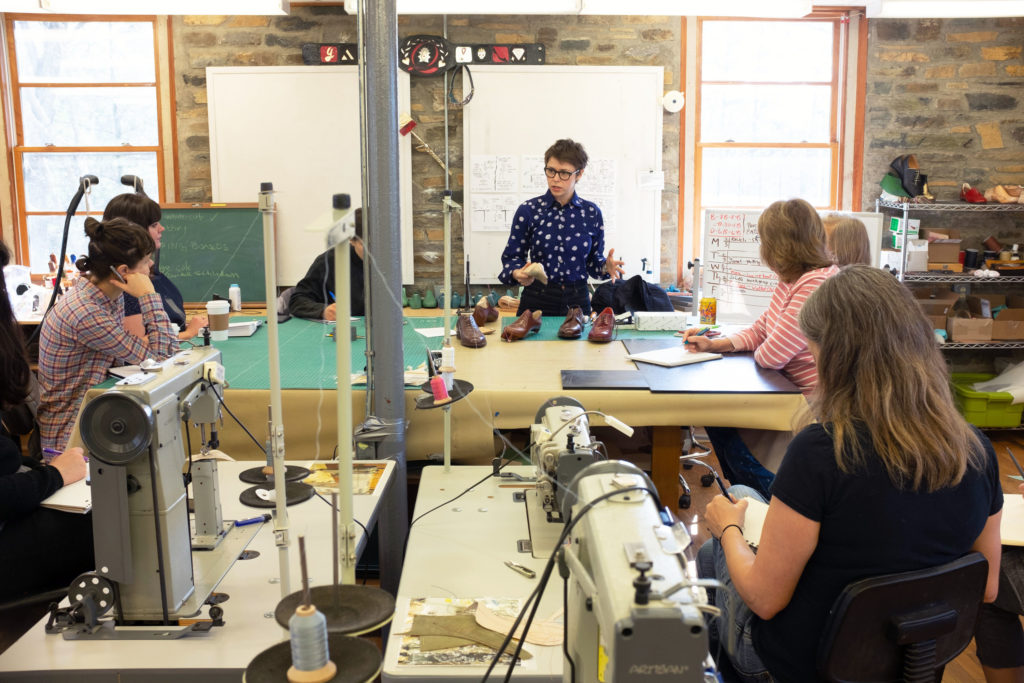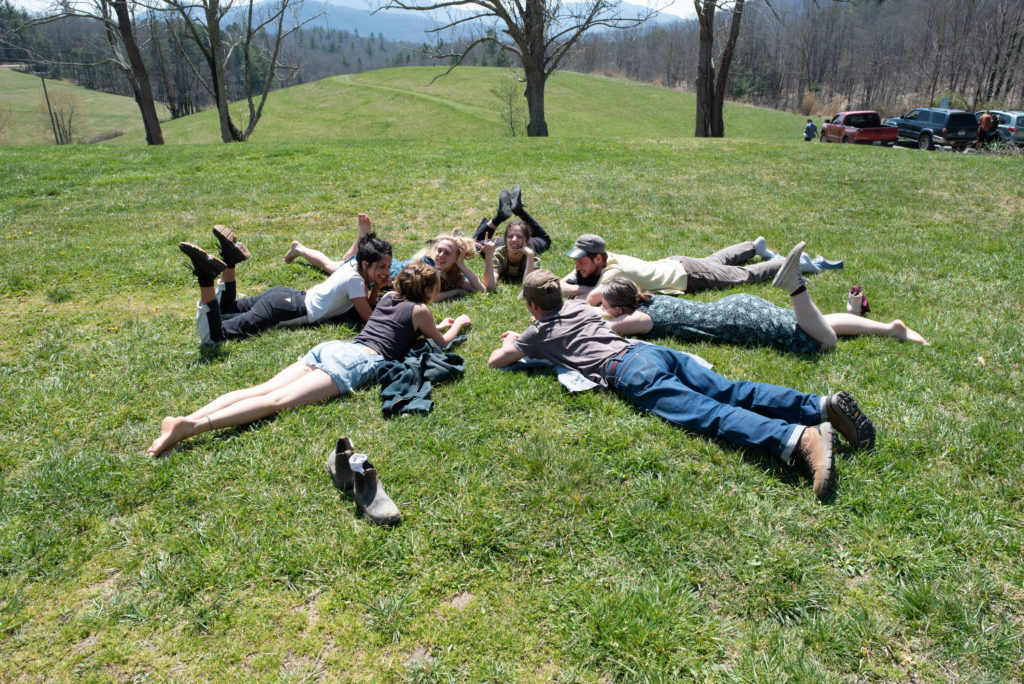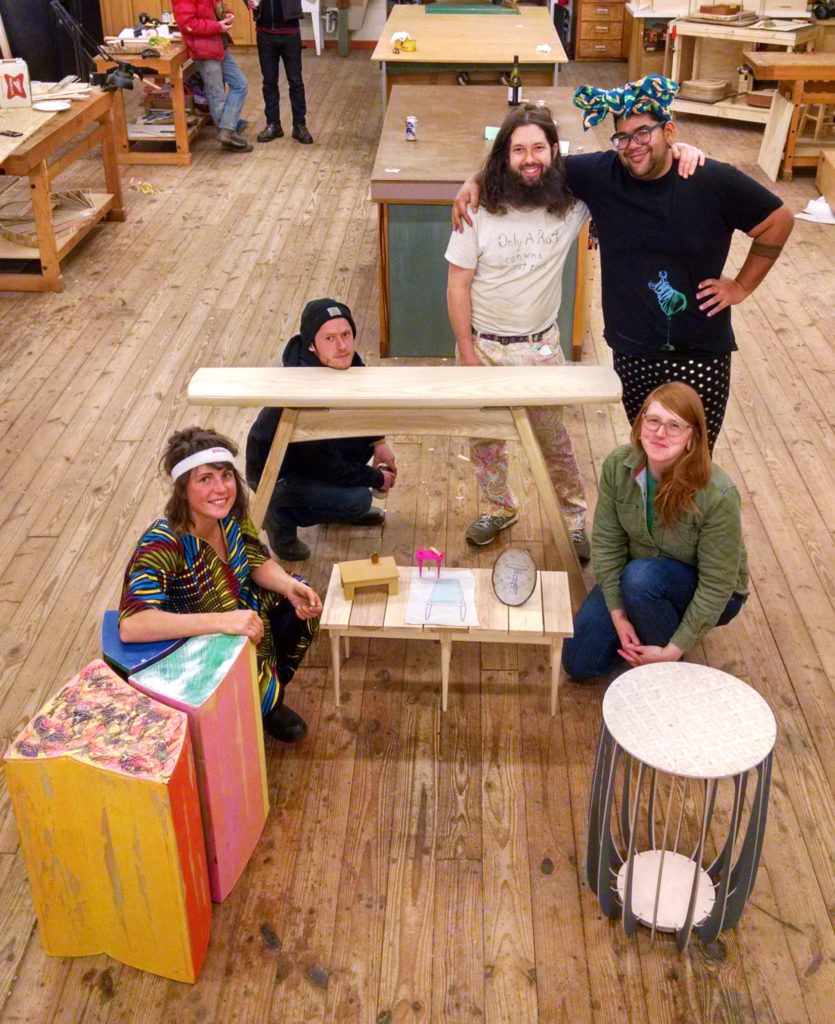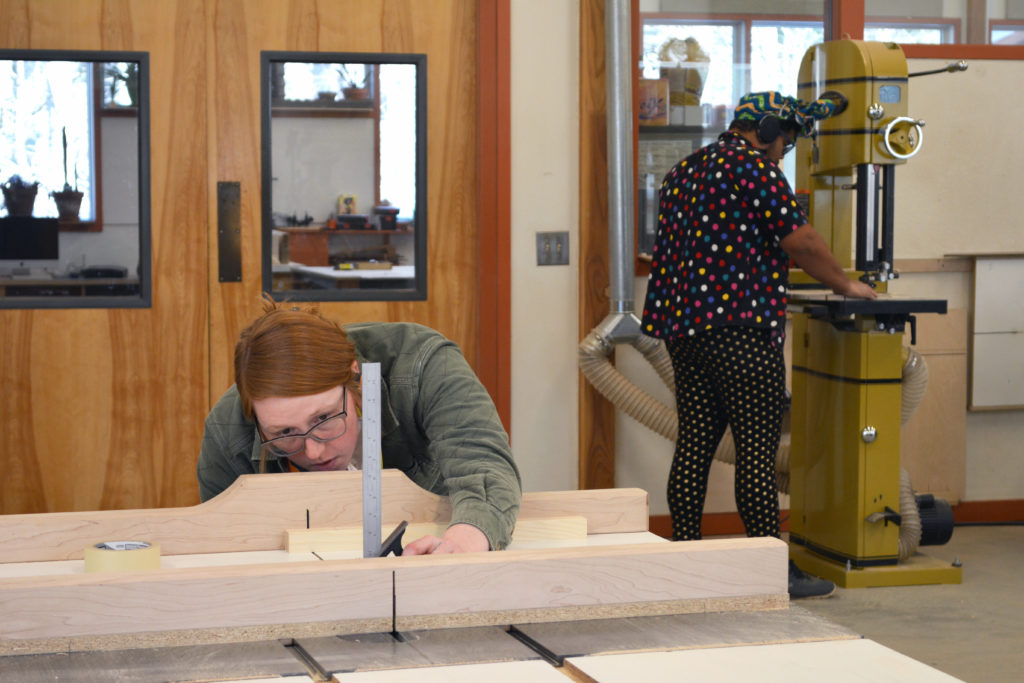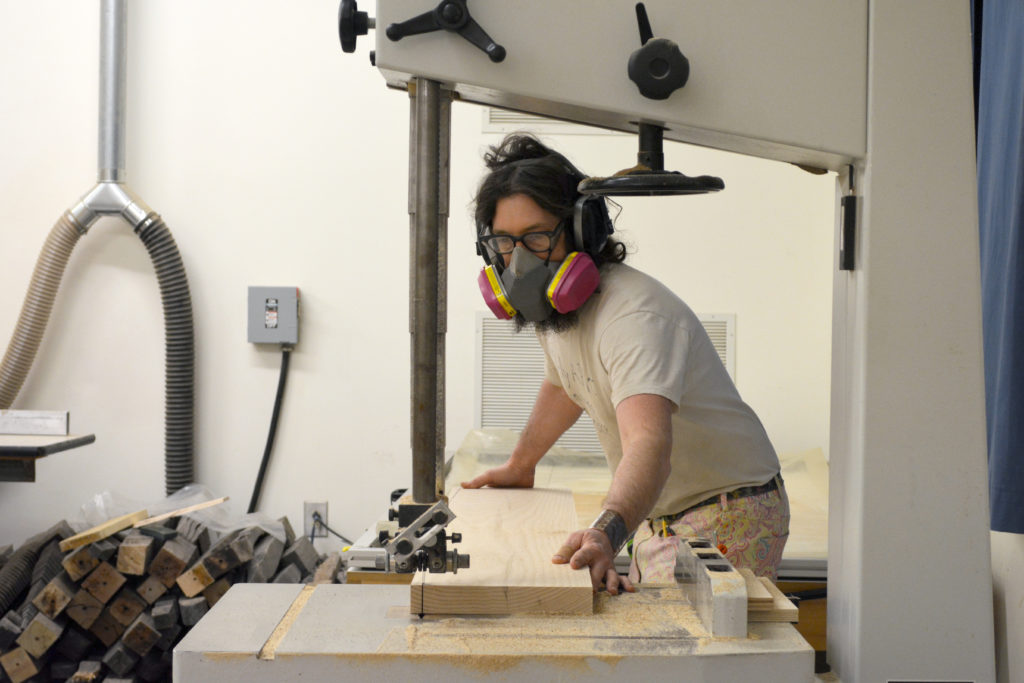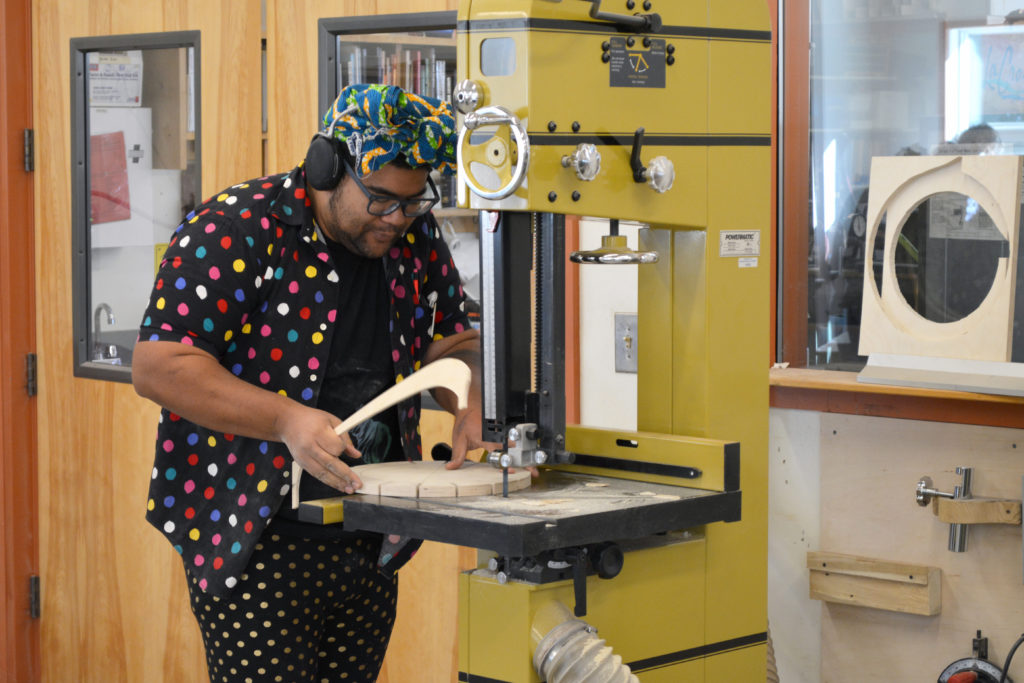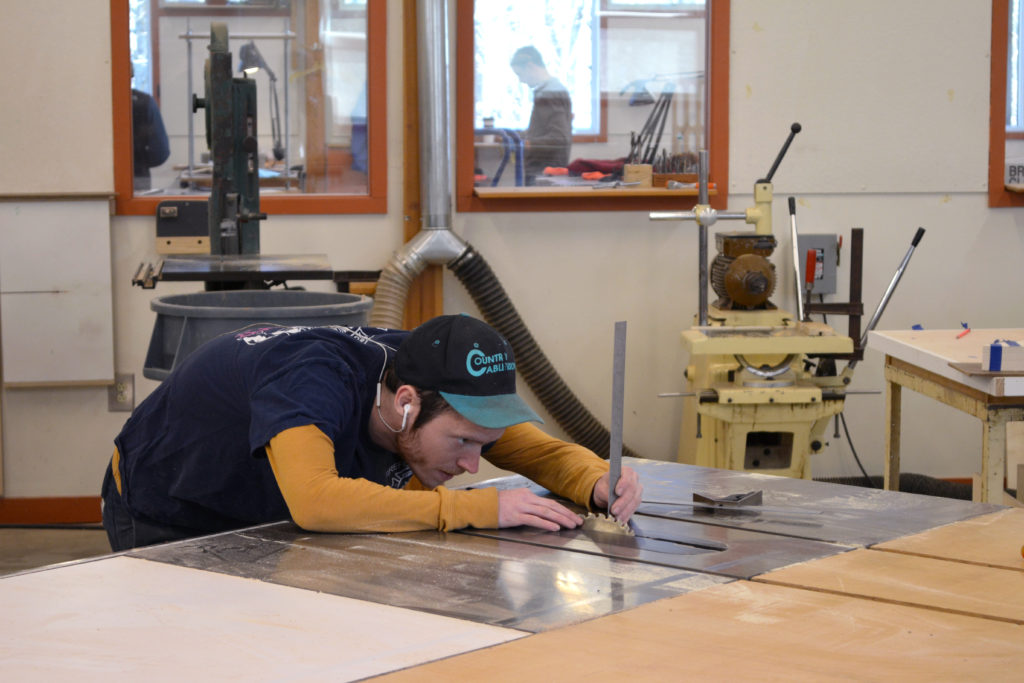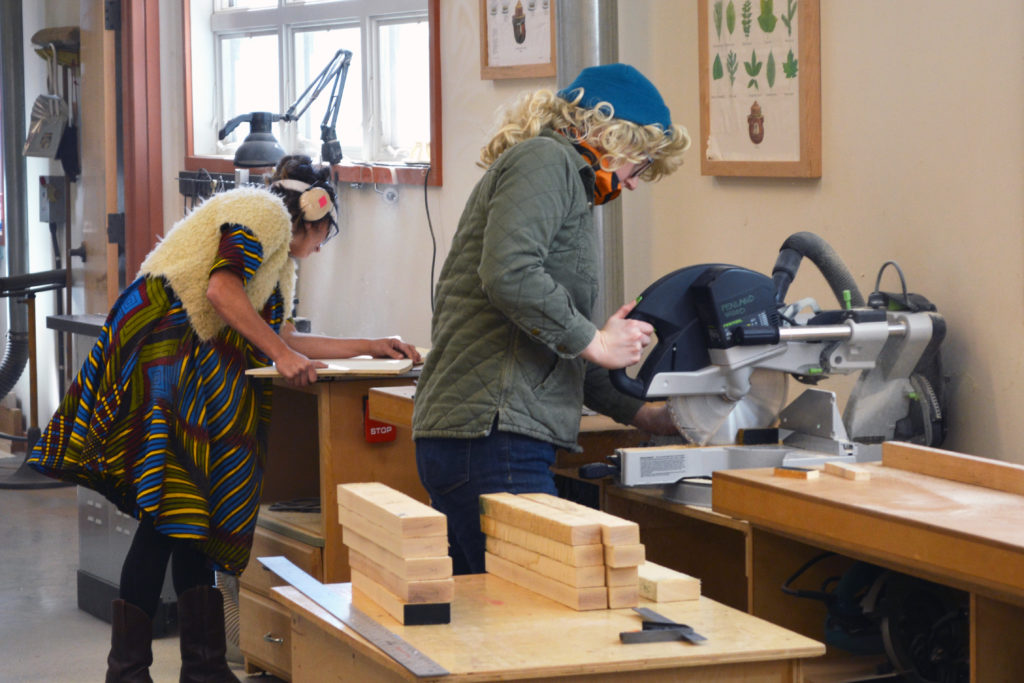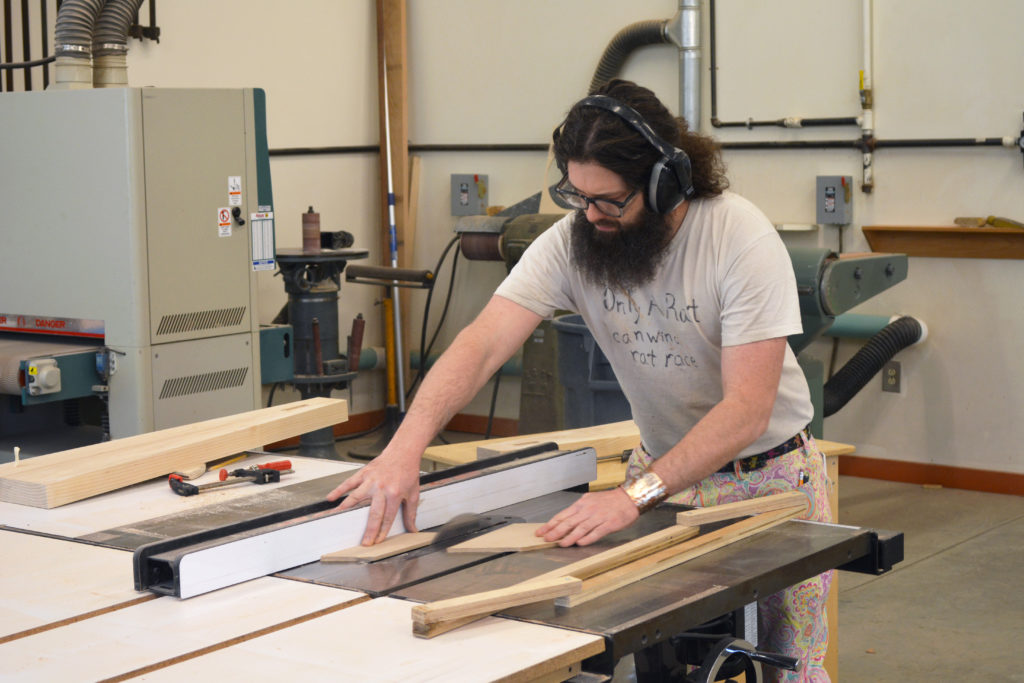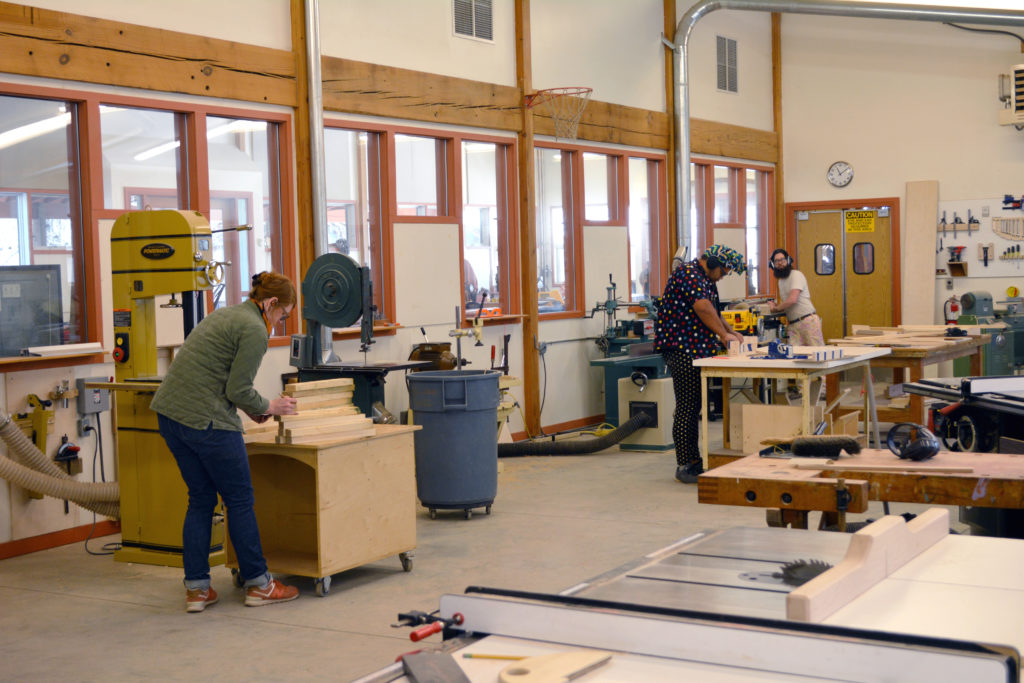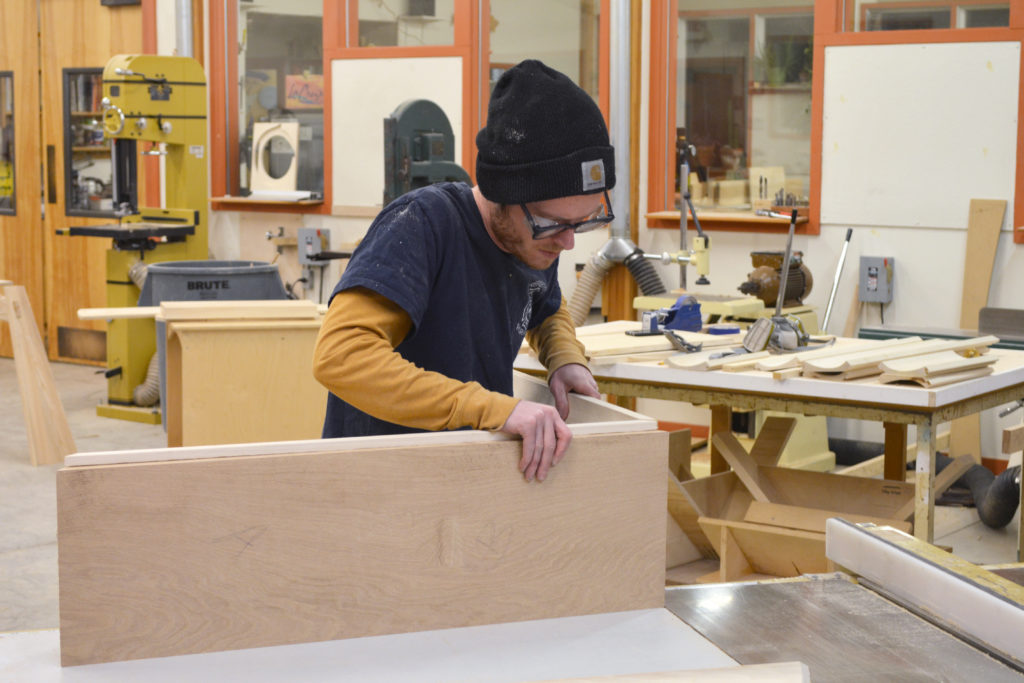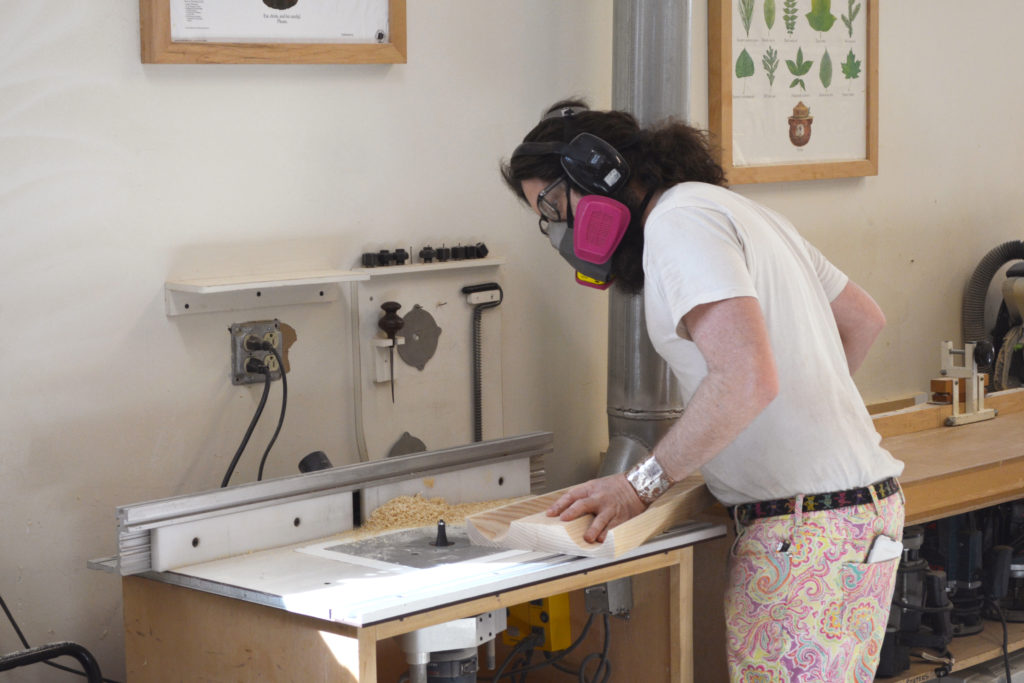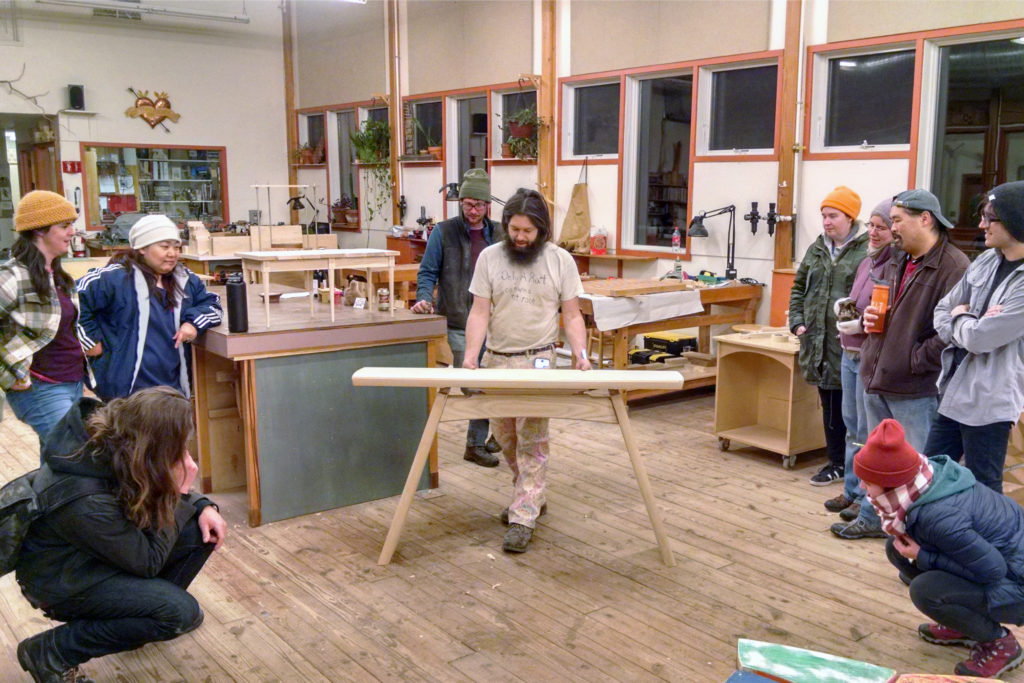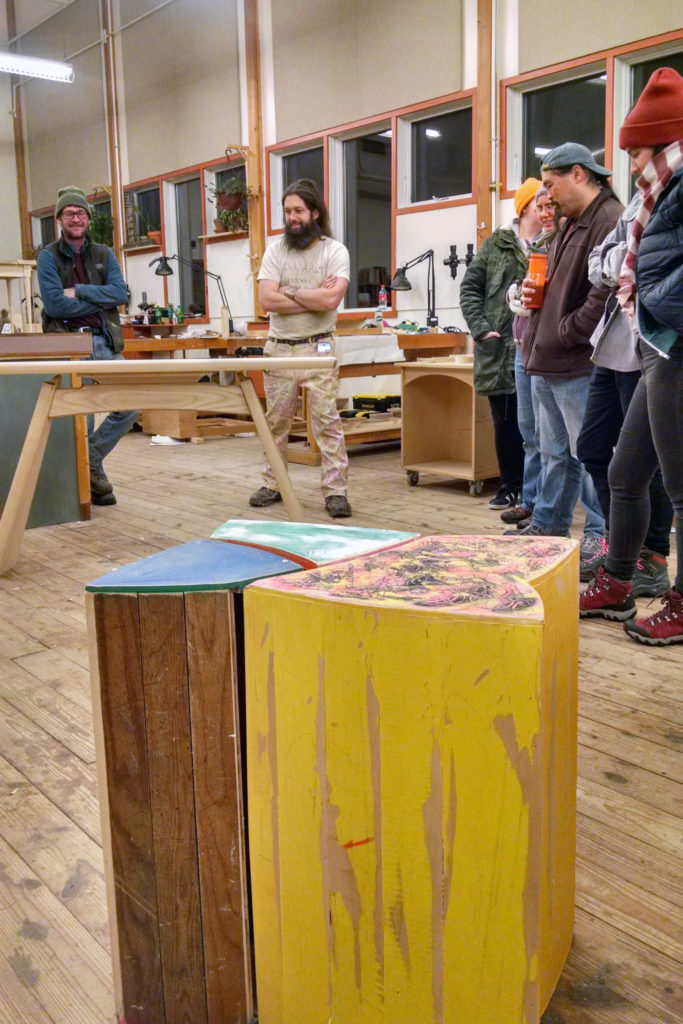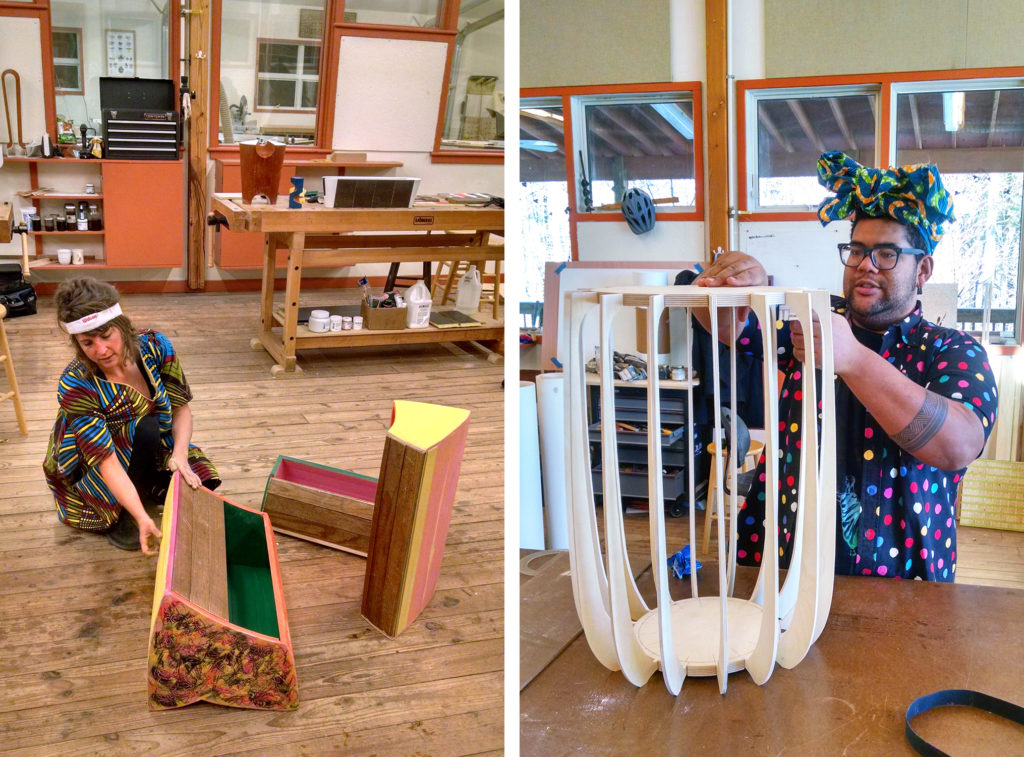
Summer at Penland boasts the Annual Benefit Auction and the Fourth of July parade. The spring season gets the Community Open House and the Easter egg hunt. In the fall, there’s the annual Halloween party and the final scholarship auction of the year. But it may be winter that hosts my favorite Penland event of all—Table in a Day in the wood studio.
Like these other Penland traditions, Table in a Day distills so much of what’s vital to life at Penland: fine craft, camaraderie, a bit of hustle, and a lot of fun. Participants have the twelve hours from 9 AM to 9 PM to construct a table of their own design, from milling the wood to joining and finishing the pieces. Now in its fourth year, it’s a frenzy that never fails to result in beautiful work and good laughs.
By this year’s 9 PM finish line, when pizza magically appeared on the studio tables and residents from all over campus came to marvel at the results, artists in the wood studio had transformed rough boards and ideas into a stunning variety of actual tables. Some were colorful and adorned with patterns, while others boasted elegant curves and thoughtful joinery. Wood studio coordinator Ellie Richards incorporated flooring from the old Northlight building into her three-part design, while core fellow Corey Pemberton used the strength of plywood to his advantage in a series of thin splines that support a circular top (both pictured above).
And, this year, the Penland community proved that you don’t have to be a wood resident to join the fun. Other entries included a 3D-printed miniature table in hot pink plastic (complete with pink plant accessory!), a table-shaped box made of book board, a clay dish decorated with an image of an intricate hall table, and screenprint embellished with drawing to make a pool table. There was even a remote Table in a Day entry from fall concentration instructor Christina Boy from her wood studio in Virginia!
Take a look at the slideshow below to get a glimpse of the action, or check out #tableinaday on Instagram for more photos.
—Sarah Parkinson
